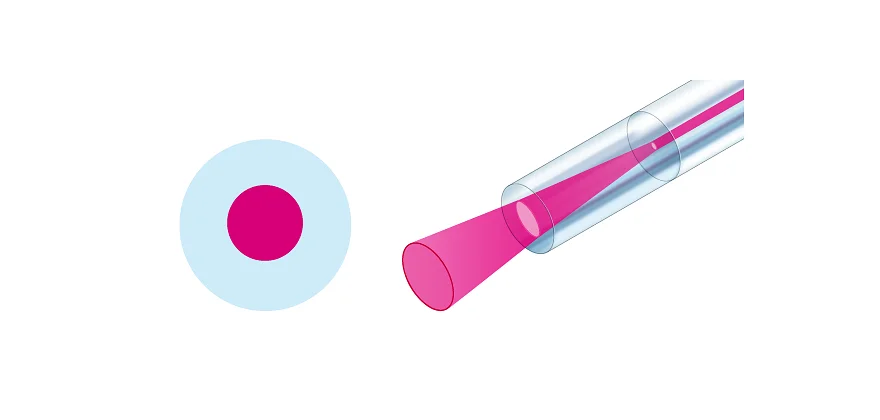Standard Fibers with end caps
The maximum power that can be guided within a fiber is mainly restricted by the power density at the fiber end-faces, when not considering bulk, nonlinear optical effects within the fiber, such as Brillouin scattering. Extreme power densities can cause scorching of the end-face or photo-contamination by the generation of a dipole trap.

Regular fiber without end cap

Fiber with end cap
Working with end cap fibers
The end cap fibers are terminated with standard FC-connectors and profit from all benefits known for these
standard connectors. Also, this means, that the fibers can then be used with 60SMS laser beam couplers or with 60FC fiber collimators for example, all of which have an easily and precisely adjustable focus position. This is of great
importance when swapping a fiber without end cap for one with end caps, since in this case the focus position of the lens within the collimator or coupler has to be adjusted typically <200 µm to correct for the divergence within the end cap.
Please note: In some cases.e.g. for short wavelengths and end cap fibers the stroke of the eccentric key type 60EX-4 might be too small. Please use the eccentric key 60EX-5 with a larger stroke instead.
Polarization extinction ratio of end cap fibers
The fiber cables with end caps made by Schäfter+Kirchhoff typically have a polarization extinction ≥ 200:1 (21 dB) or ≥ 400:1 (23 dB) for λ ≥ 780 nm. For more details on PM fibers please see here.
End cap connectors and mating sleeves
PCF Fibers with end caps
The fiber connectors of all PCF fiber cables are equipped with an end cap. This means that a short piece of coreless fiber (< 300 µm) is spliced onto the PCF fiber.
The end cap seals the microstructre of the fiber and allows for an easy cleaning of the end-face.
Additionally it also reduced the power density at the fiber end-face (see standard fibers).